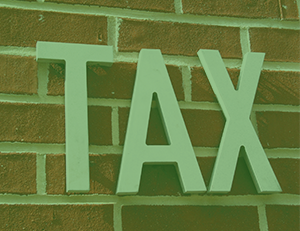Taxable Payments Annual Report: Your FAQs Answered
If you run a small business, you’re probably well aware that there’s a range of reporting requirements you need to meet when the end of financial year (EOFY) rolls around. But some requirements, like the Taxable Payments Annual Report (TPAR), don’t apply to all small businesses – and, as such, often aren’t covered in general lists of essential EOFY tasks.
If your business makes payments to contractors or subcontractors, and provides services like building and construction, cleaning, courier or road freight, information technology or security; you need to know about TPAR, and may need to lodge a report by August 28 each year.
We’ve answered some of the most frequently asked questions about Taxable Payments Annual report (often called TPAR reporting) below.
What is a Taxable Payments Annual Report (TPAR)?
In short, the Australian Taxation Office (ATO) collects these reports once a year, so they can identify contractors who are not meeting their tax obligations. A Taxable Payment Annual Report (TPAR) is an industry-specific form that includes the total amount a business has paid to contractors throughout the year. If you are a businesses that makes payments to contractors, you may need to report these payments and lodge a Taxable payment annual report (TPAR), depending on what industry your business operates in (see: Do I need to lodge a TPAR?).
Contractors should be including all of their income on their tax return (and lodging a tax return or activity statement in the first place), registering for GST (if required), and quoting the correct Australian Business Number (ABN) on their invoices. If all businesses report taxable payments that have been made, there’s a much more level playing field for the small business community in general; meaning that dishonest operators aren’t able to gain an unfair advantage over everyone else.
The system also works both ways, because the information gathered from the TPAR can also help individual contractors (i.e., sole traders) as the ATO can pre-fill information about these payments into their tax returns.
Do I need to lodge a TPAR?
In most cases, if your business provides building and construction, cleaning, courier or road freight, information technology or security, investigation or surveillance services or is a government entity, you are required to lodge a TPAR.
Make sure you check the specific rules for your industry before doing so, as obligations can differ depending on the proportion of business income you receive from those services or due to various exemptions. For example, if less than 10 per cent of your business income for the financial year is from one of the relevant services and you didn’t make payments to contractors for a relevant service during the year, you may not need to lodge a TPAR Report with the ATO.
What do I need to report?
You need to report the payments you made to contractors during the financial year. There are different payments you need to report in your TPAR, depending on whether you’re a business or a government entity.
As a small business, you’ll need to be reporting payments made to contractors for certain services. If you received any invoices from contractors, including both labour and materials, regardless of whether that invoice is combined or itemised, you must report the total amount of the payment. The only exception to this is if the labour component was only incidental.
Are there any resources to help me record this information?
Yes! Accounting software like the Cashflow Manager will become your best friend. With it, you can easily record contractor payments that you made for services made during the financial year, which you can then transfer to the ATO’s helpful worksheet and payee information statement. Remember, this doesn’t need to be sent to the ATO when you complete your TPAR – it has simply been designed to help you in the process of filling it out.
You can also provide contractors with information that you recorded for the purposes of the TPAR if you choose – it will likely help them complete their tax return – but note that there is no formal requirement to provide contractors with any details you report on your TPAR.
How to lodge Taxable Payments Annual Report (TPAR)?
You can lodge electronically, by paper (only if the electronic option is not available to you), through a tax professional, or through an accounting software. Follow the ATO’s guide to lodgement for more information about lodging your TPAR.
How to lodge TPAR report via Accounting Software
Sole traders and businesses using SBR-Enabled software like Cashflow Manager can submit their Taxable Payments Annual Report (TPAR) using their accounting software. Using SBR-Enabled software has the advantage of pre-filling much of the information in the TPAR and making the process quick and easy.
How to lodge TPSR report electronically
If your business does not use software, your next steps will depend on your business structure. If you are a business – with an ABN and a secure credential myGovID and Relationship Authorisation Manager (RAM) – you will need to log into the ATO’s Online Services for Business Portal.
If you are a sole trader, you will need to log into the ATO’s Online Services for Individuals and Sole Traders Portal. These online services portals allow you to view, prepare, lodge and revise your taxable payments annual report. Select [Lodgments] then [Taxable Payments Annual Reporting].
I’ve made a mistake. Can I go back and correct a lodged TPAR report?
Yes, you can provide an amended TPAR. This is essential if you’ve provided incorrect amounts in either the total GST, gross amount paid, or total tax withheld fields; provided an incorrect ABN or name in the payer or any of the payee fields; or need to add a new payee.
The way that you can lodge your amended TPAR depends on how you lodged the original. For example, you could go back to your tax professional, or you could generate an amended report using the online accounting software you used for lodgement.
I have not paid any contractors for their services. How do I lodge a Nil TPAR?
If you’ve read through our guide and think that you have nothing to report on your TPAR, then all you have to do is submit a Nil TPAR report. This form tells the ATO that you have nothing to report on your TPAR and do not need to lodge one.
This is sometimes the case for small businesses that work within the relevant industries (building and construction, cleaning, courier or road freight, information technology or security, investigation or surveillance services) who did not pay any contractors during the past financial year. Just be sure to thoroughly check your records, receipts and invoices for any contracted work before submitting a Nil TPAR report.












Leave a Reply